Millions of American motorists have been rushing to buy before the Trump auto tariffs take hold. But automakers and auto dealers were already driving up transaction prices even before the sanctions went into effect on May 3, despite White House claims prices won’t rise. If anything, costs are going to continue going up, reports Headlight.News.
Even before the new Trump auto tariffs went into effect, new vehicle prices were on the rise – automakers and their dealers slashing the rebates, low-interest loans and other incentives that had been driving double-digit sales increases in recent months. But that’s only the beginning.
Anderson Economic Group, a Michigan-based consultancy, estimates that even the least impacted vehicles could still see a tariff burden above $2,000. Some vehicles, according to their estimates, could have a tariff burden of up to $12,000.
The exact estimate varies on whether the vehicle is assembled in the US and the percentage of American-made parts that go into it, according to AEG, which is noted for its conservative-leaning analysis. Even for some vehicles assembled in the United States with substantial U.S. content, AEG estimated tariff cost burdens of $2,000 to $3,000. This included popular products such as the Honda Civic and Honda Odyssey, Toyota Camry Hybrid, and Ford Explorer.
Buy Now, Not Later
“If you are in the market for a new car and you find one you like, my advice is to buy it right away. If you have a used car you rely upon, my advice is to make sure it is well maintained as you are likely to use it for a while longer than you had earlier planned,” Patrick L. Anderson, the group’s principal and CEO, said in a news release.
Ford is one of numerous automakers holding the line on price hikes – for now. But CEO Jim Farley recently said he could not promise consumers prices won’t go up after July 4.
Meanwhile, Audi, which will be hit hard by the tariffs, has halted shipments of new vehicles to the U.S., telling dealers to sell out of their existing inventory until the tariff situation is clarified. A number of other European brands, including Lotus and Lamborghini, have taken similar steps.
Affordability now in the foreground
“Millions may no longer be able to afford a new vehicle, warned analysts from Cox Automotive, as the sanctions add thousands of dollars to the price of even the least expensive models now on the market,” Headlight.News reported recently. Indeed, many of those products will likely be dropped by manufacturers like Chevrolet, Honda, and Hyundai.
“Even something as small as “a 1% increase (in prices) could take away 10% of the market” for affordable vehicles, said Jonathan Smoke, chief economist at Cox Automotive, during a meeting of the Automotive Press Association. Of the twenty models in entry segments, he added, “I expect less than half (will) exist if the tariffs become permanent.”
Cox also estimated the recession now expected by big banks such as Goldman Sachs will only exacerbate the problem. A recession would reduce sales of new vehicles to around 14.5 million units annually, which is well below the sixteen million vehicles analysts had predicted at the beginning of 2025.
More Auto News
- Trump Tariffs Likely to Drive Many Budget Buyers Out of the Car Market
- April Auto Sales Surge as Buyers Rush to Beat Tariffs
- Trump Gives Some Tariff Relief to Automakers
White House remains bullish on auto business
Nonetheless, the White House continues to insist American consumers will not pay more for a new car or truck because of the Trump tariffs.
“No, not on cars they won’t,” White House deputy chief of staff Stephen Millier said in response to a question of whether consumers might have to pay more to buy a vehicle as automakers adjust their production to account for Trump’s tariffs.
“Because again, there is now a massive economic incentive for automobile producers to expand production in the United States, and whatever they make here, there will be no tariff,” he added.
Trump, during an interview on Meet the Press, acknowledged prices on some items like dolls and pencils might go up, but Americans, he said, could make do with less. Come the Christmas holidays, he suggested, children might “have two dolls instead of 30 dolls.”
Car makers forced to do more with less
Ever since the 1920s, Motor vehicles have been viewed as a symbol of American affluence and abundance, but manufacturers are now beginning to strip down their proposed offering by bringing-back features like crank windows to hold down costs.
CEO Mary Bara said that tariffs could cost General Motors up to $5 billion. As for consumers, she said that the leader in U.S. auto sales will “stay competitive” by working with suppliers to find ways to reduce costs.
“We have been able to maintain strong pricing and low incentives because customers want our vehicles,” Bara told CNN. “What we’ve said and what we have provided in our guidance is that pricing is going to stay about at the same levels of what it is.”



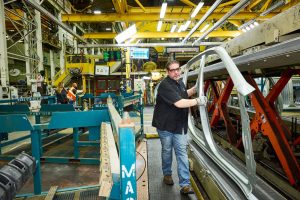

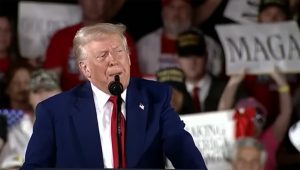
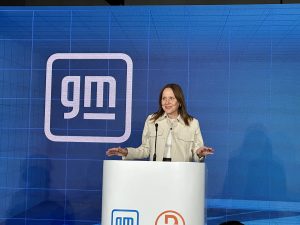
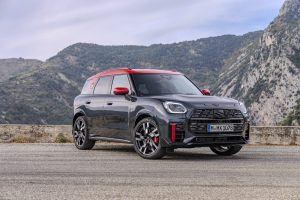


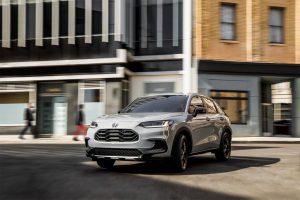


0 Comments